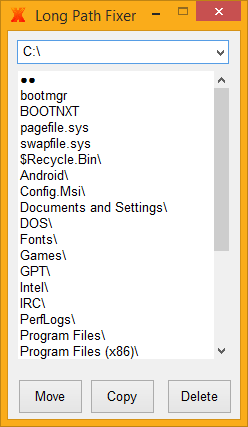

In that case every user of the system will be able to deal with the service. If you don't know in advance the name of the user who will deal with the service, you can use the term user.
#Long path tool validate key how to#
The following is a break down of how to write these syntaxes: The value of a key is parsed in a specific format depending on the key. The frontend service file allows the following section names:Īlthough a section can be mandatory not all of its key fields must be necessarily so. An entire section can be commented out by placing the number sign # in front of the opening square bracket like this: # This means that special characters, uppercase letters and numbers are not allowed in the name of a section. SectionsĪll sections need to be declared with the name written between square brackets and must be of lowercase letters only. This way the parser can read the file as fast as possible. The sections can be declared in any order but as a good practice the section should be declared first. Most names should be specific enough to avoid confusion. Key names are case sensitive and can not be modified. Comments are allowed using the number sign #. If a key is set then the value can not be empty. The parser will not accept an empty value. File names examples /usr/lib/66/service/dhcpcdįile content example = "ntpd = ( root = (įoreground You can find a prototype with all valid section and all valid key=value pair at the end of this document.

The file is made of sections which can contain one or more key value pairs where the key name can contain special characters like - (hyphen) or _ (low line) except the character (commercial at) which is reserved. The name of the file usually corresponds to the name of the daemon and does not have any extension or prefix. The frontend service file has a format of INI with a specific syntax on the key field.

Although this can be changed at compile time by passing the -with-system-service=DIR, -with-sysadmin-service=DIR and -with-user-service=DIRoption to.

For regular users, $HOME/.66/service will take priority over the previous ones. The frontend service file of 66 tools allows you to deal with all these different services in a centralized manner and in one single location.īy default 66 tools expects to find service files in /usr/lib/66/service and /etc/66/service for root user. If you're interested in the details you should read the documentation for the s6 servicedir and also about classic, oneshot, longrun (also called atomic services),bundle and module services. It is quite complex to understand and manage the relationship between all those files and services. The s6 and s6-rc programs each handle and use several kinds of services and different files.


 0 kommentar(er)
0 kommentar(er)
